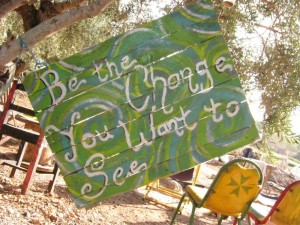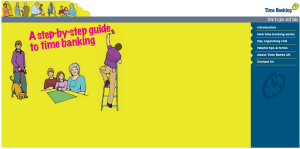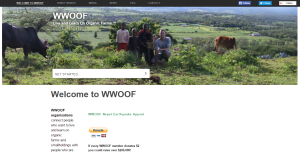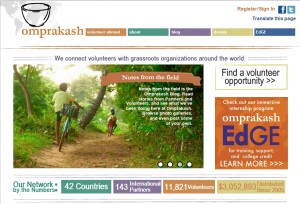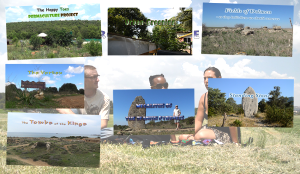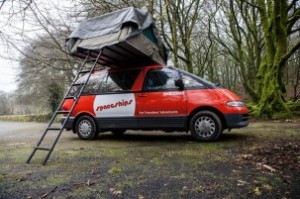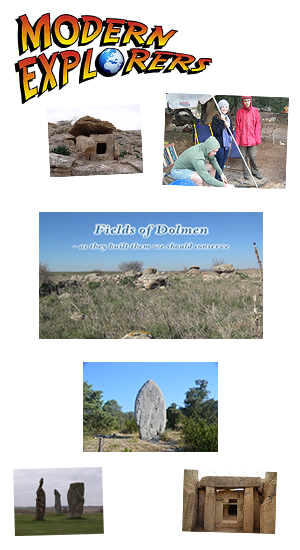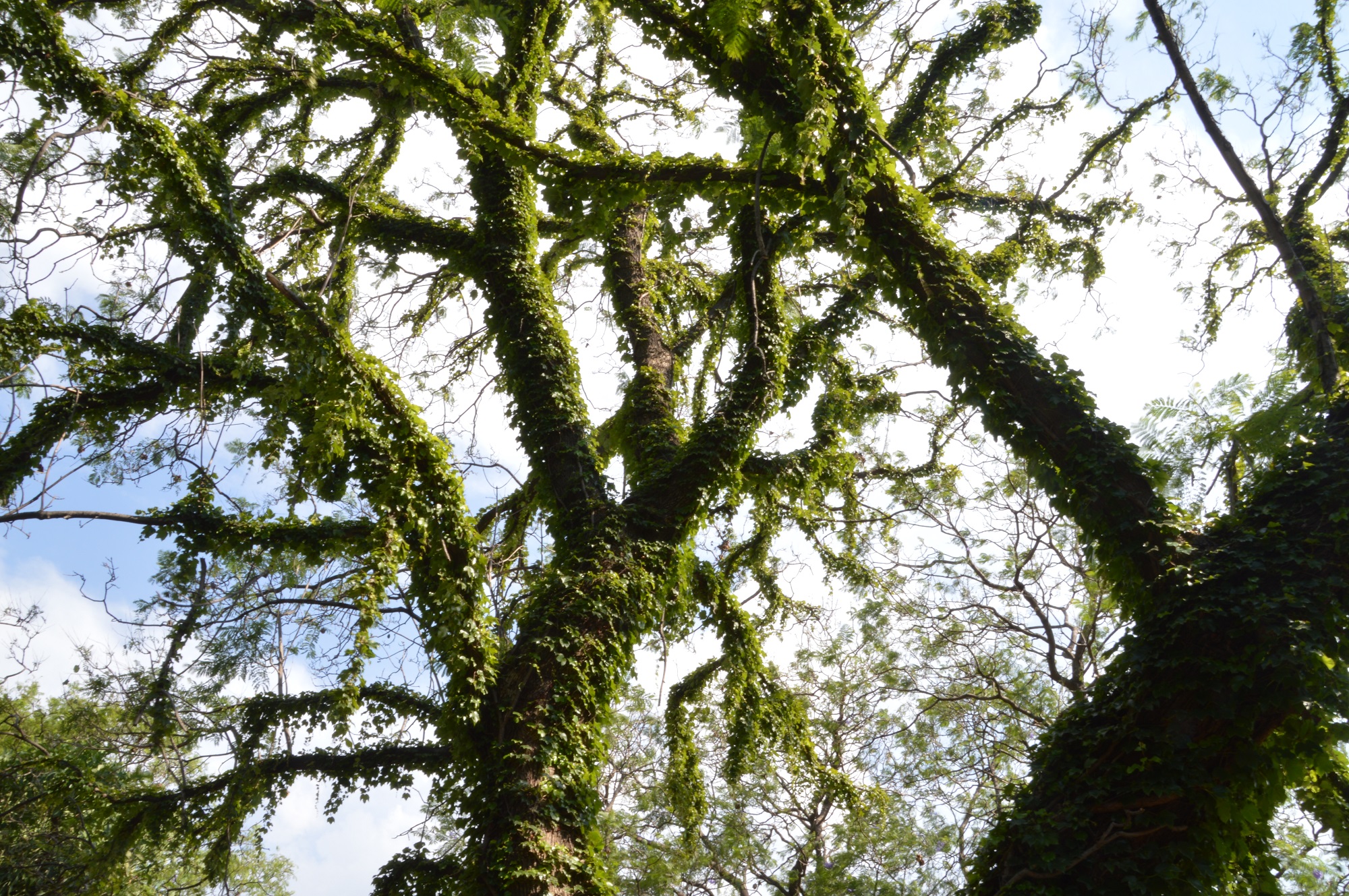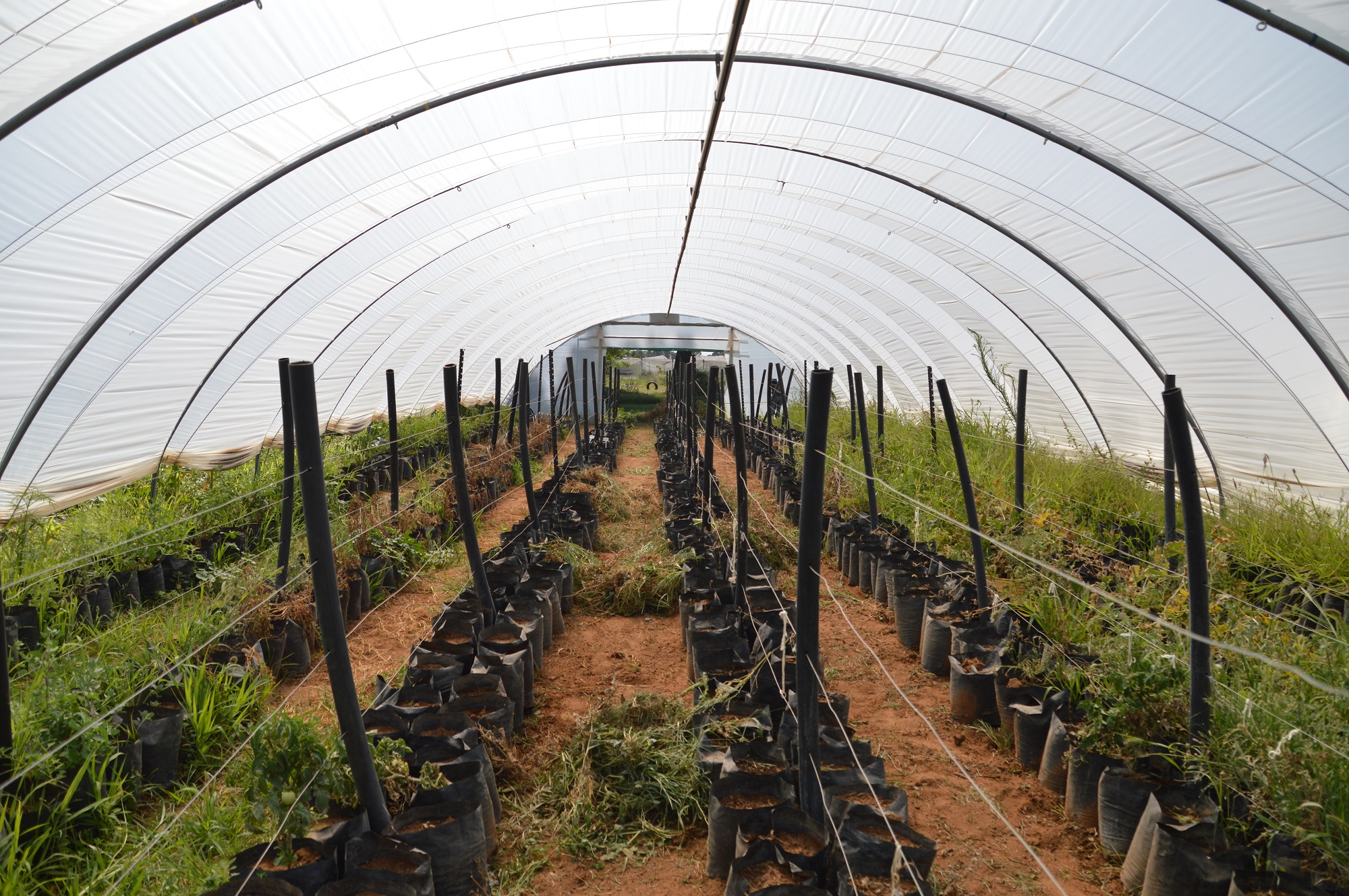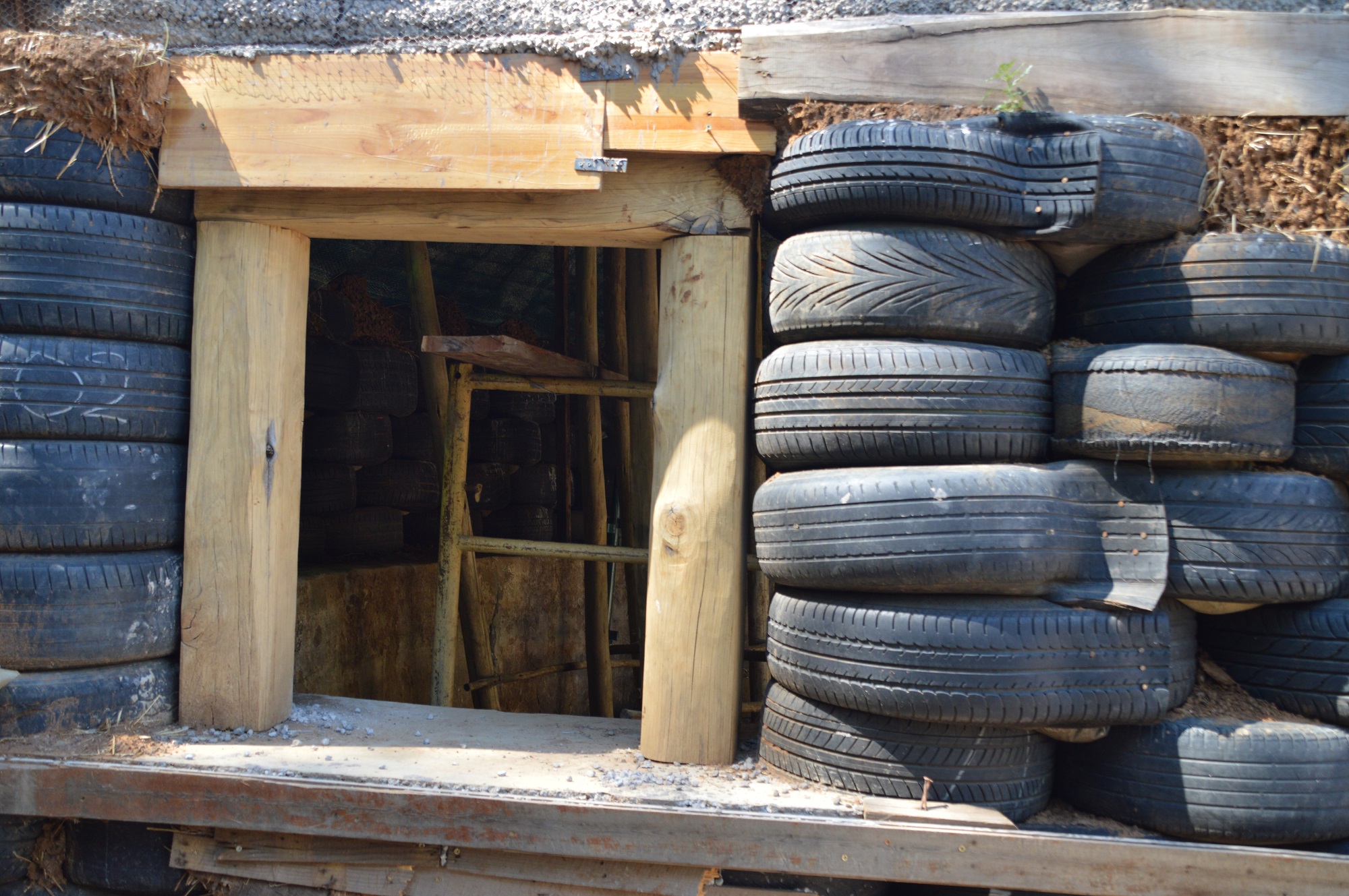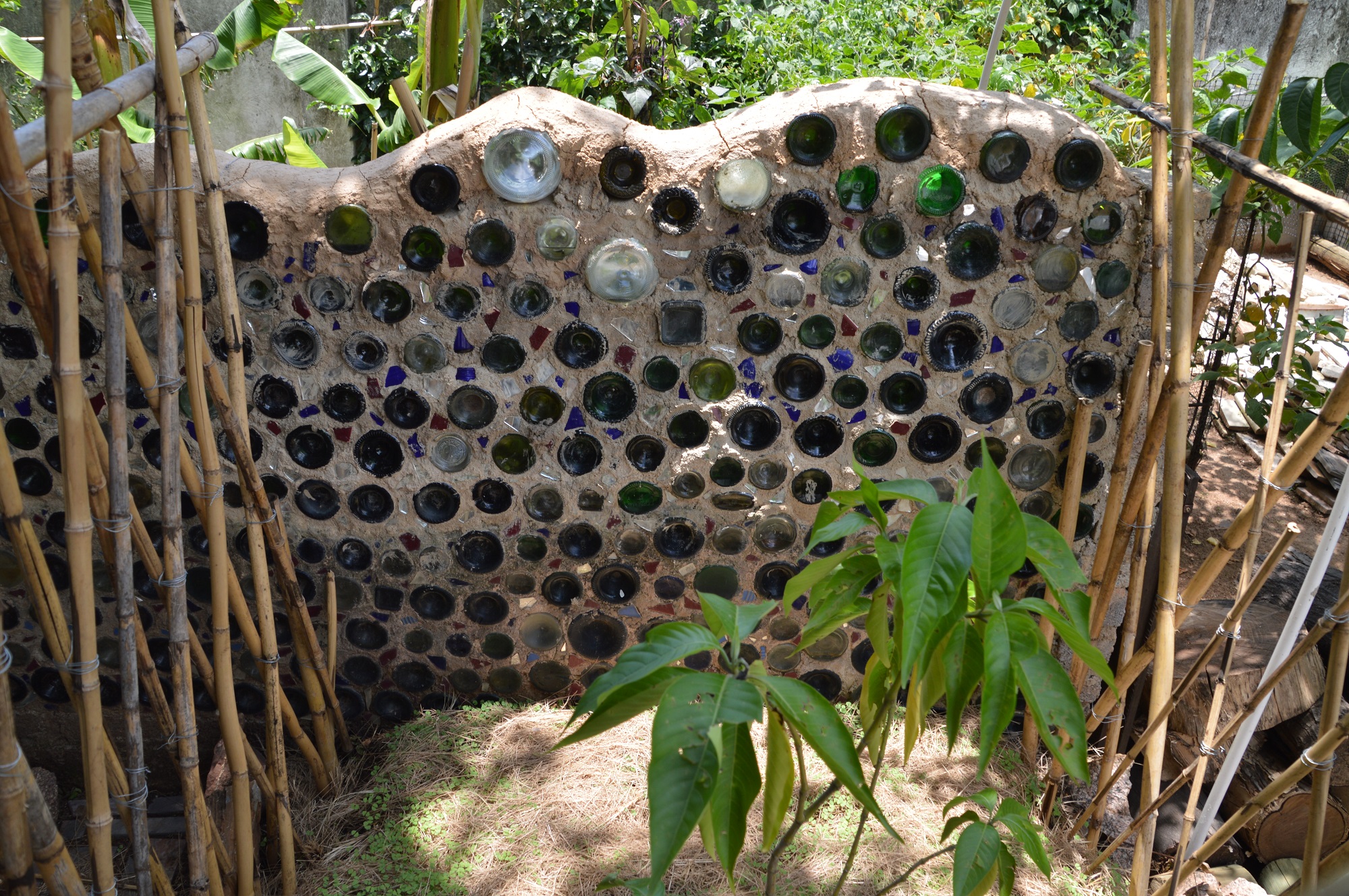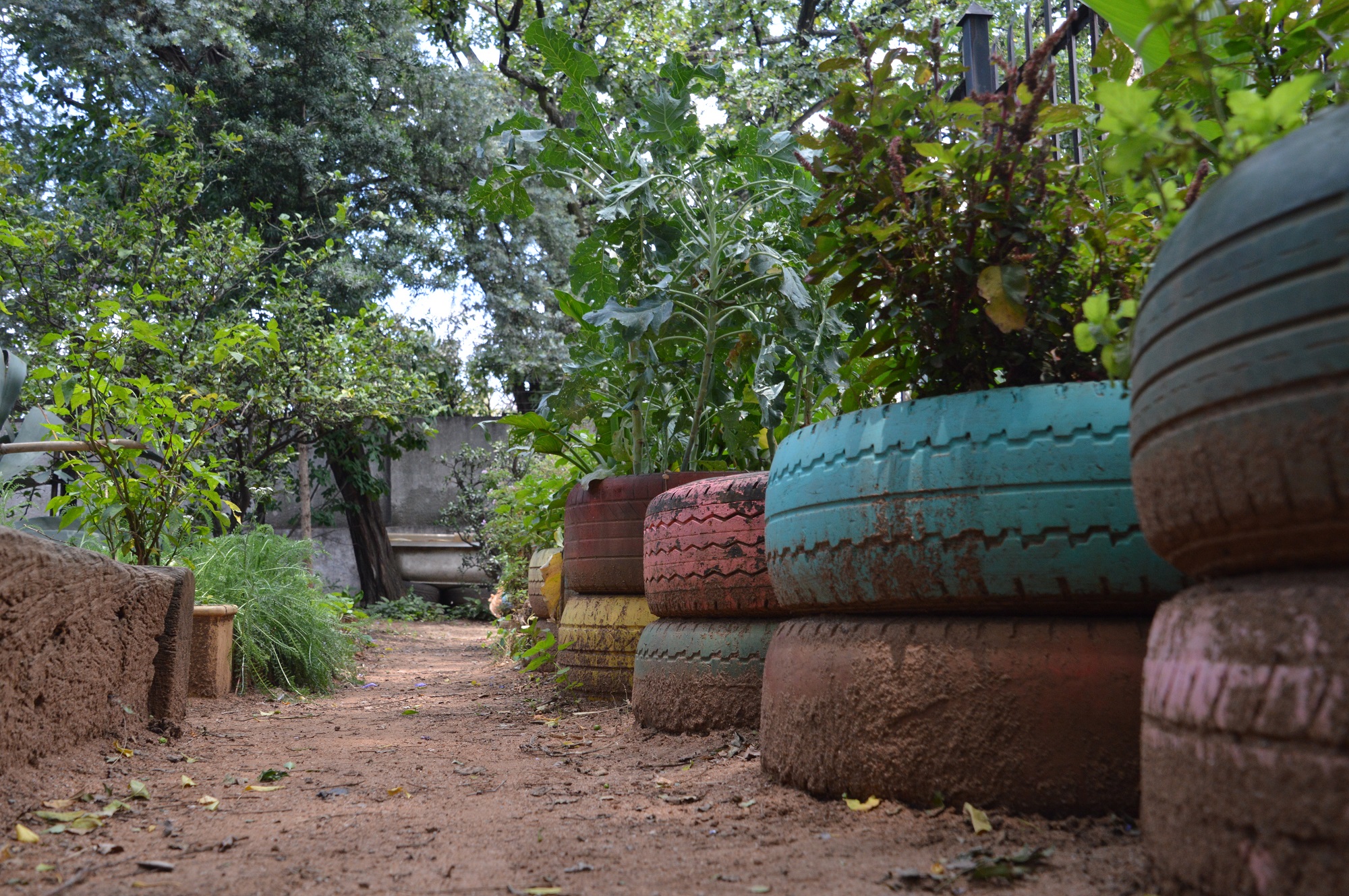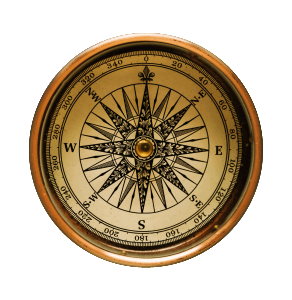
Back to Nature Project
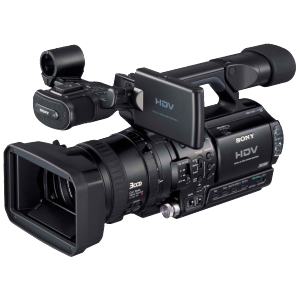
.
Our Back to Nature project incorporates any movement or idea that takes us back to a more natural way of living, opposing (the other end of the spectrum) a life in the matrix or this new global system that is forming around us and which seeks to control every aspect of our lives.
.
.
This project materialized after Rich visited a friend living in a sustainable village in Italy then met Mick in Malta to film megalithic temples and they both volunteered for a week at an eco-friendly village called The Vortex. The project was still in its infancy but they were trying to grow their own food and had plans to create their own energy, which we felt was a step in the right direction for humanity taking power away from energy and food companies and at the same time respecting the planet. It is also better for the people, both physically and psychologically to live at one with nature.
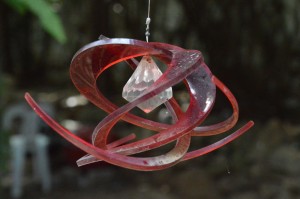
.
The project has expanded in the last 2 years and now incorporates 3 different areas which we feel are hugely revolutionary movements. We investigate permaculture and off-grid living, earth-building techniques and constructive recycling, as well as alternative currencies and other schemes which eliminate the need for money. These 3 areas overlap considerably and most projects we have visited use different techniques and procedures from each of the 3 sections.
.
.
.
Permaculture
and Off-Grid Living
Permaculture is a system of agricultural, a philosophy of using intelligent design, modern techniques and technology to copy and work with (rather than against) natural ecosystems in a way that benefits both humanity and the environment.
It is a fascinating subject which is still evolving and has many aspects but the aim is to make sure that we can sustain human activities on this planet for many generations to come and in harmony with nature. It’s about stability, about deepening soils, cleaner water, thriving communities in self-reliant regions, bio-diverse agriculture and social justice, peace and abundance.
.
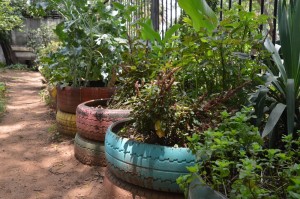
Permaculture principles include recycling waste and growing plants that benefit each other
.
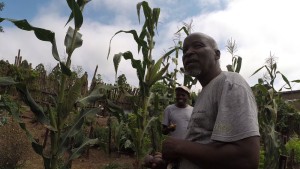
This guy uses permaculture to grow enough food to feed his whole family
.
Permaculture combines three key aspects:
- An ethical framework
- An understanding of how nature works, and
- A design approach
.
Creating your own food is beneficial to your health as you eat fresh organic food and can incorporate medicinal plants into your diet. Permaculture teaches people to group plants together so that they benefit each other, for example one plant might produce a scent that deters the insects that eat a neighbouring plant.
If you can also produce your own energy you will reduce your cost of living, benefit the environment and all of the above takes power away from the governments who control the agricultural, energy and food industries; very revolutionary and right up our alley.
.
.
.
.
Earth Building
and Constructive Recycling
Over the past few decades, numerous building methods have been investigated, revived and improved upon by a new breed of visionary designer-builder. They use materials and techniques which are ecologically sound, culturally sensitive, reliant on local resources and skills, and are within economic reach of local inhabitants; many of whom cannot currently afford shelter. Natural building has also emerged as a response to an increasing concern for our environment and natural materials are an alternative to toxic substances which have led to widespread environmental illness. Those seeking to simplify their lives can build their own homes using such techniques, with community help and local, inexpensive materials.
.

A greenhouse wall made from plastic bottles
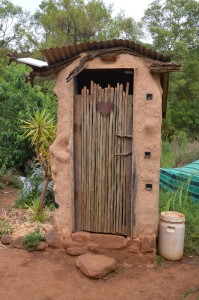
A cob toilet using sunlight for power and re-using the human waste as manure.
.
We feel this movement is revolutionary because it provides an excellent alternative to the ridiculous cost of living provided by the system and therefore helping to house the poor around the world. Living in natural housing also benefits your health, your mental state and the environment in a safe and artistic manner. Using materials and techniques such as Cob, Straw, living roofs, Rammed Earth, Straw Bale and Earthships make the price of building much cheaper allowing the poor of the world to build safe and comfortable housing. On our trip around Southern Africa we visited a project in Bloemfontein that was educating people from the shanty towns how to use earth-building techniques and some of the results were fantastic.
.
Another step in the right direction for humanity is to make better use of our waste materials and we have met many people in this movement seeking to source building materials from the huge amounts of waste we produce as a species, turning a negative into a positive.
.
.
.
.
Alternative Currencies
They say money is the root of all evil but more accurately we feel that money is the tool that evil uses to pull the strings on this planet, it can be used for good but those that create the money don’t seem to want that rather using it for their own selfish needs. The rich-poor divide is widening and the elite (who print the money for us “common folk” to share) are creating less money and keeping a higher percentage for themselves. We the common folk are the ones that do everything, we build everything, grow everything, we literally do everything but the elite have created a system where they can change our motivation and therefore change the things we do. Well we say let them keep their numbers and their paper money and we can find a more humanitarian way to trade skills and possessions.
.
.

The world of money creation is a monopolistic industry so we need to provide some competition. There are many people around the world that are coming to this realization and hence we have the accumulation of a number of fantastic movements that are trying to provide an alternative to using money. Bitcoin is the most famous but it is the leader of a large number of alternative currencies, or systems of finance that discourage the accumulation of wealth instead providing a fair way for us commoners to exchange talents and goods.
.
.
.
Workaway – we’ve used this website a lot to trade our time for food and a place to sleep, really good for travellers.
.
.
The C.E.S – the community exchange system is a website that allows you to trade your talents or possessions. We met a number of people using this system in Johannesburg and they have managed to reduce the amount of money they need to earn in a year. It is also popular in other parts of South Africa and is really catching on in Austrailia and New Zealand as well.
We met some of the people involved in the Johannesburg exchange
Paying with Promissory Notes – Michael Tellinger exposing the banks scam
.
Ubuntu – is a growing movement aiming to provide competition to the monetary system by introducing a more just and more community based way of organising humanity. It is a revolutionary movement devised by Michael Tellinger which now consists of people from all walks of life and has recently formed a political party. We made some films to help Michael when we visited the Ubuntu Stone Circle Village at the end of 2014, the best one showed him talking about paying the system with promissory notes.
.
.
.
Some other currencies available
.
Here are some different websites that can help you achieve things without needing to use money created to benefit the elite.
.
.
.
.
.
Projects We Have Visited
.
On our travels we have used Workaway on a number of occasions, which is a website where you can find numerous projects varying from working on farms, teaching languages, even working with Huskies in the north of Norway. For approximately 5 hours work per day you receive a bed and food in exchange therefore reducing the amount of money you need, we have stayed and eaten places in exchange for all sorts, from building a dry-stone wall to working in a hotel. Listed below are the projects we have visited…
.
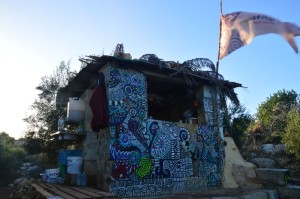
The Kitchen
.
The Vortex – is a project on the island of Malta that uses volunteer websites like workaway to provide the labour to build a village. They had only just started when we made the film below but we loved the project because they were using earth-building and permaculture principles to rejuvenate some disused land. Their aim is to create food for the community and provide a space where people can come and meet, meditate or be creative in their art studio.
.
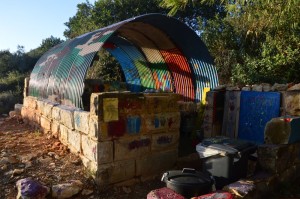
The art studio
The film we made
.
.
.
.
Urban Greening – we visited an inner-city permaculture project in Johannesburg which incorporated aspects of earth-building, creative recycling and used both workaway and the community exchange system. We stayed with Hanneke for more than a week and filmed previous renovations, such as the conversion of her swimming pool into a greenhouse and we learnt all about the nutritional and medicinal benefits of growing your own food.
Hanneke collaborated with us on a filming production and took us on a road trip to see a number of other projects in South Africa, as well as pointing us in the direction of Guba in Swaziland.
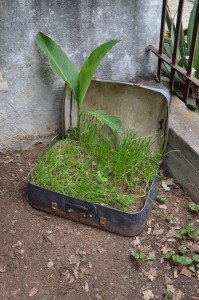
Some cool looking recycling
.
uRBAN gREENING – THE FILM ABOUT OUR VISIT

BEDS MADE FROM BOTTLES AND 100’S OF SPECIES OF PLANT
.
.
.
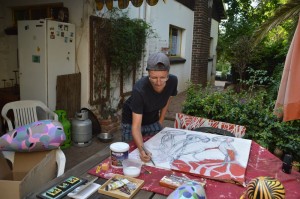
.
Netanya Naude – is an artist who was living with Hanneke while we were in South Africa. She recycles old bits of wood from dumpsters, she collects waste from the garden and she uses plant waste to create beautiful works of art. She lives an alternative life, growing and selling teas and exchanging goods as well as having great agricultural experience and knowledge. We loved the philosophy behind her work, very positive – helping and working with nature.
.
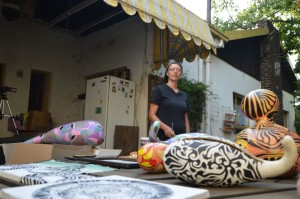
Netanya in action
A short interview of Netanya showing some of her work
.
.
.
Earthship, Orania – we went to Orania to visit an earthship that has been constructed by Ludwig Everson and his family. They live in an excellent example of a top of the range earth-built house, built from straw bales, with solar panels, rain collection and cycling of the water so it gets used 4 times. We filmed the house then Ludwig took us on a tour of Orania, a town that is virtually off-grid, with some amazing examples of earth-building techniques and recycling, such as the houses built from old shipping containers. As well as trying to go off-grid the town has also created its own currency, trying to break away from the unjust monetary system that is forced upon us.
We loved this project because the house they have built would easily be appealing to the more “westernised” members of our species yet it is off-grid and better for the health of the residents and the planet.
.
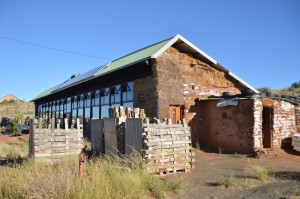
Ludwig’s Earthship
.
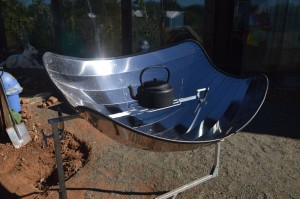
A solar cooker
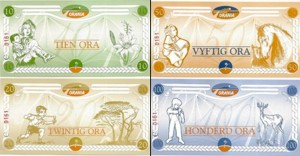
The currency in Orania
.
.
.
.

Two of the locals learning Anita’s techniques
Shack Replacement, Bloemfontein – through a contact of Hanneke’s we met Anita Venter who showed us the project she was working on. She is educating the inhabitants of different districts of the shanty towns how to use earth-building techniques to build their houses rather than the corrugated iron they currently opt for. The housing is cheap (mainly labour is needed) so it is appealing to the poor, it also controls the heat inside the house much better than the shacks and they are much nicer to live in, for example you can use coloured bottles to make the house look nice. They are also educated in food production and Anita works with a local Politian to help teach the poor folk how to grow their own food.
The project runs in association with an orphanage called Lebone Village, both of which use volunteers who come and work in exchange for a bed and food, using time as an alternative currency.
.
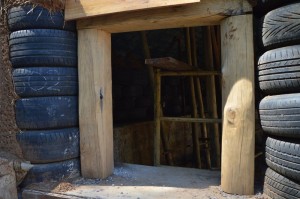
Recycled tyres are great building blocks
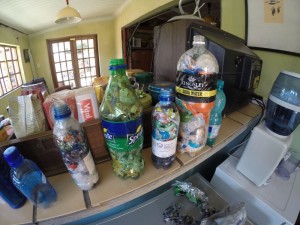
2 weeks worth of rubbish forced into plastic bottles make great bricks
.
.
.
Happy Toes – is a project close to Groot Marico where a young couple have opened their home to volunteers who continue to improve the property and help with food production but also learn something about the art of earth-building and agriculture.
We loved this project because it’s been created using intelligent design and uses aspects of all 3 of our sections, and apart from needing to buy groceries they are completely off-grid so managing to escape the clutches of the elite.

The main building
.
Our film about the project
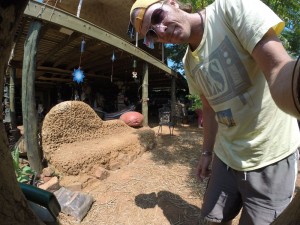
A bench made from cob
.
.
.
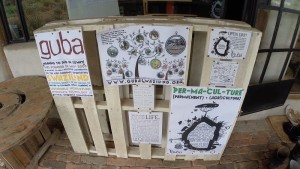
.
.
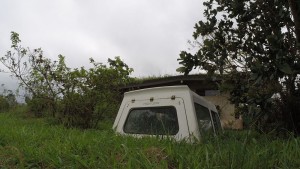
.
Guba – an exceptionally well organised project we visited in Swaziland which has a school for children and runs workshops for adults to teach locals how to use permaculture ideas to reduce their dependency on the system. The property is pretty big and well established so they are now producing large amounts of food for the community and many people have come to learn what they teach. It’s run by a lovely couple who also encourage learning about earth-building techniques and alternative forms of energy, all for no profit and just to help people.
We spent some time with a couple of local guys both of whom have used the farm for a number of years and see the massive potential in the principles they teach. We were taken to the property of one of the guys who can grown enough food on his small piece of land to feed his whole family and still have some left over to sell.
.
.
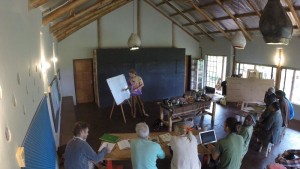
They give lessons on all sorts
Mick put some footage from Guba in one of his Corn Flakes films
.
.

.
.
.





